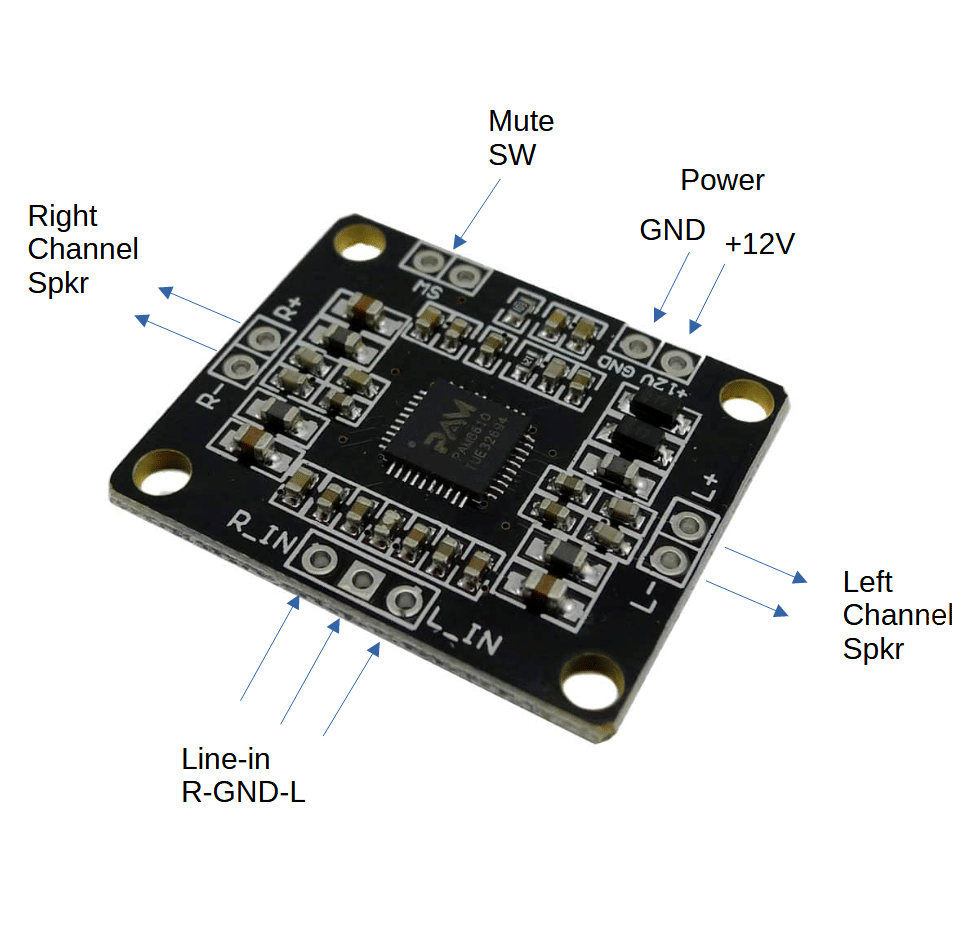PAM8610 10W Stereo Audio Amplifier Module – User’s Guide
Overview
The PAM8610 is a compact, high-efficiency Class-D stereo amplifier capable of delivering 10W per channel into 8Ω speakers at 13V. It features DC volume control, low distortion, and minimal external components—ideal for embedded audio systems, portable devices, and modular integration.
Key Specifications
| Feature | Details |
|---|---|
| Output Power | 10W × 2 @ 8Ω, 13V supply |
| Voltage Range | 7V – 15V DC |
| Efficiency | >90% |
| THD+N | ~0.1% @ 1W |
| Inputs | Differential (LINP/LINN, RINP/RINN) |
| Outputs | BTL (Bridge-Tied Load) |
| Protection | Overcurrent, thermal, short-circuit |
| Package Type | QFN (on module PCB) |

Pinout Reference
| Pin | Function |
|---|---|
| VCC | Power input (7–15V DC) |
| GND | Ground |
| LINP / LINN | Left channel differential audio input |
| RINP / RINN | Right channel differential audio input |
| LOUTP / LOUTN | Left channel output (BTL) |
| ROUTP / ROUTN | Right channel output (BTL) |
| SHDN | Shutdown/mute control (active low) |
Wiring Guide (Basic Setup)
Power Supply
- Use a regulated 12V DC supply (7–15V range)
- Ensure at least 2A current capacity for full output
Speaker Output
- Connect 8Ω speakers to LOUTP/LOUTN and ROUTP/ROUTN
- Do not ground speaker terminals—BTL outputs are floating
Audio Input
- Use a preamp or DAC with differential output
- For single-ended sources (e.g., 3.5mm jack), use resistive summing or transformer isolation
Shutdown/Mute
- Pull SHDN pin low to mute or shut down
- Leave floating or pull high for normal operation
Integration Tips for Embedded Systems
- Add low-pass filters on inputs for noise suppression
- Mount on a heat-dissipating surface if driving full power continuously
- Ideal for pairing with Bluetooth audio modules, MP3 decoders, or microcontroller-based UI
Troubleshooting
| Issue | Possible Cause | Fix |
|---|---|---|
| No sound | SHDN pin low or input miswired | Pull SHDN high, check inputs |
| Distorted output | Overdriven input or low supply voltage | Reduce input level, check VCC |
| Speaker hum/noise | Ground loop or poor filtering | Use isolated inputs, add filters |
| Module overheating | Continuous high-power output | Improve airflow or heatsinking |
